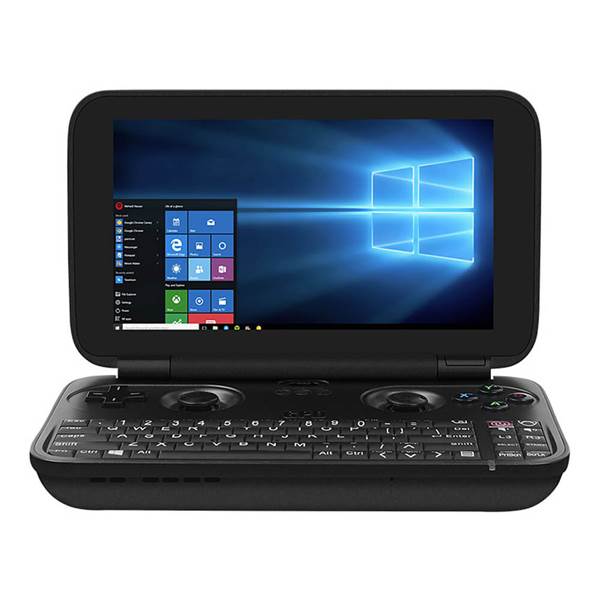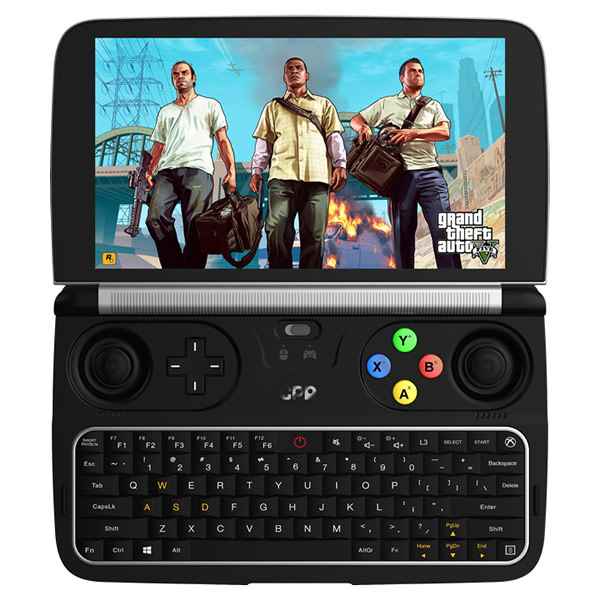Small is beautiful: The rise of the pocket gaming PC
Intel’s ongoing obsession with low-powered CPUs and on-die graphics is paying off.

I have a secret. I've edited PC gaming magazines, talked up these powerful towers of gaming power, and spent much of my working life surrounded by motherboards, processors, and video cards... But I have always lusted after handheld systems.
By the time I had money to indulge this perversion, all you could get was the Gameboy Advance. But since then, I’ve worked my way through the pantheon of great handhelds. GBA, Nintendo DS Lite, then PSP, then PS Vita, then Nintendo 3DS XL, and most recently the Nintendo Switch.
I played Terraria to endgame not on PC, but on the PS Vita. I mastered Binding of Isaac on PS Vita. I finished Cat Quest on the Switch. I’ve only ever played Stardew Valley and Oxenfree on the Switch. Don’t look at me!
Yes, I know these handhelds are hopelessly underpowered. I know playing Skyrim on the Switch is, like, just weird. But these handhelds give me something, the only thing, the PC can’t: the ability to curl up with a game in the same way I curl up with a book.
You have to see it from my perspective. I may not be a journalist in the strictest sense, but I sure as hell am a professional writer. I spend my days in front of the PC, typing on the PC, doing PC-things. The bulk of my communication is done through the PC.
"To long-time followers and fans of the open source emulation scene, the initials “GP” have a certain legacy."
So after eight hours (or more, on deadline) in front of the machine, the last thing I want to do is flick over to Steam and boot up a game that demands 100 hours of my time just to get to the good stuff.
But I still want to play games. And handheld systems help me scratch that itch. And yet, and yet... as a PC evangelist I know... I see. It’s just not the same. The games lack a certain something, a certain... depth isn’t the right word, because especially since the 3DS, the PS Vita, and the Switch, handheld games have become plenty deep. But... look, you know the difference right? That’s why you’re a PC gamer.
Keep up to date with the most important stories and the best deals, as picked by the PC Gamer team.
So what I’ve always wanted is a handheld system that lets me curl up on the couch but also play PC games. And now, thanks largely to Intel’s push for ultra-compact form factors, handheld gaming PCs are at last starting to be a thing.
To long-time followers and fans of the open source emulation scene, the initials “GP” have a certain legacy. The GP32 (which I own, and I’m pretty sure I even know what drawer it’s in) was an ARM-powered Linux-based handheld emulator that could more or less handle most of the games from the 8-bit age. To be honest it was a pile of plastic junk with a low-res 4:3 display, but it was a proof of concept, yeah?
After the GP32, various other, at first Linux, and then Android-based systems came and went. It was all very niche, very underground. Not least because all these systems relied on illegal ROMs to even work.

Eventually, in 2016, a Hong Kong outfit crowdfunded a device it called the GPD Win. This was a machine that took Intel’s Atom CPU platform, a 5.5-inch 720p display from a mobile phone, a pair of thumbsticks, some buttons and a tiny keyboard, and mashed it all into a case the size of a slightly fatter 3DS XL.
Make no mistake: as a hardcore gaming machine, the GPD Win does not have the chops to make it. But it’s an incredible version 1.0 device.
It has 4GB of RAM, an Intel Atom x7-Z8750 CPU, Intel HD 405 graphics, a 5.5-inch 720p display, a whole bunch of ports including USB-C with video, a hardware keyboard, gamepad buttons and two thumbsticks, 64GB of storage, and a free version of Windows 10 Home because the screen is less than nine inches.
The GPD Win can’t handle the latest games. But it can handle every retro title you throw at it. And even more impressively, it’s a fantastic Steam home streaming device. Playing Hellblade on this, on the couch, is like witchcraft. Sure, you need a $2000+ gaming PC as well to make it work, but that’s not the point. The point here is potential.
Thanks to the success of the GPD Win, the company behind it, a Hong Kong outfit called, uh, GPD, has of course moved on to the GPD Win 2. This is a far more impressive device, with a Core M3 CPU and beefier integrated graphics that can handle most AAA games (albeit at 720p with graphics set to low).
My pre-order is in, and I will 100 per cent be giving you a detailed review of this feisty little machine when it arrives in a couple of months.
Yet as exciting as the GPD Win 2 is, I’m really looking forward to future explorations in this admittedly still rather niche space. As we were writing this issue, Intel finally confirmed its long-anticipated (and somewhat bizarre) collaboration with AMD to integrate Radeon RX Vega GPUs into its eighth-generation CPUs. Oh yeah.
The GPD Win 2 will be a good little machine that plays PC games with the detail turned down. But the generation after that should be absolutely mind-blowing. A powerful CPU with a dedicated GPU on-die, designed to handle 4K and VR? That thing will be blisteringly fast in a handheld context.
For at least ten years I’ve wanted a true, uncut, unrestricted PC experience in a handheld format. And thanks to Intel, a bunch of crazy guys with a dream in Hong Kong, and the miracle of crowdfunding, my dream may at last be coming true.
And my secret shame need be a shame no more.

